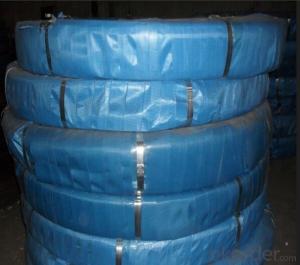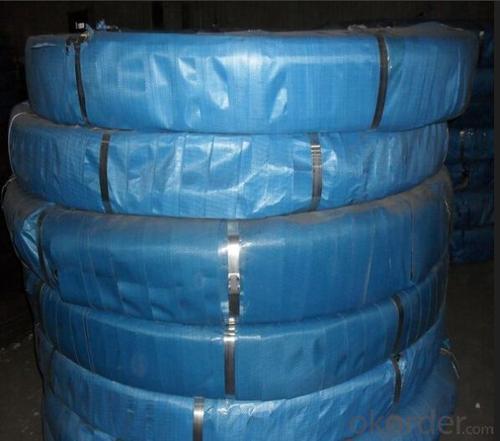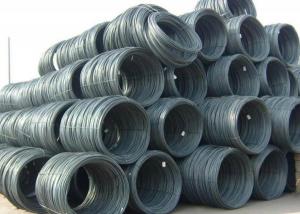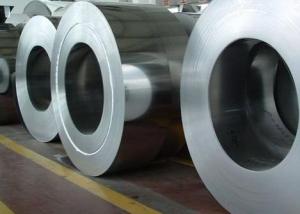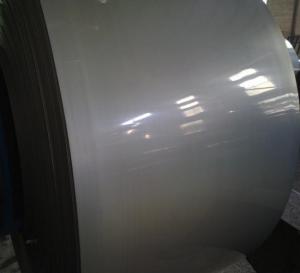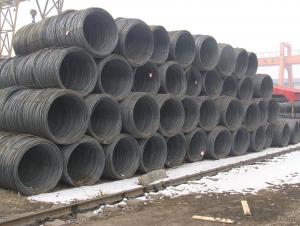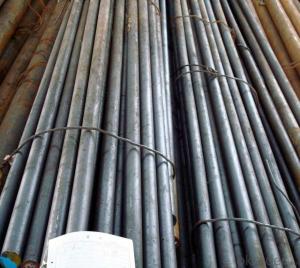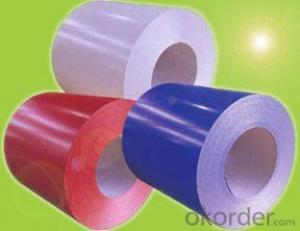Prestressed Hot Rolled Steel Wires
- Loading Port:
- China Main Port
- Payment Terms:
- TT or LC
- Min Order Qty:
- -
- Supply Capability:
- -
OKorder Service Pledge
OKorder Financial Service
You Might Also Like
Quick Details
| Steel Grade: | SWRH77B, SWRH82B | Standard: | ASTM,BS,GB,JIS | Wire Gauge: | 4.0mm-10.0mm |
| Place of Origin: | Tianjin China (Mainland) | Type: | Drawn Wire,Spiral/Helical Ribs, Round Plain | Application: | Construction |
| Alloy Or Not: | Is Alloy | Special Use: | Free Cutting Steel | Model Number: | 4.0-10.0mm |
| Product Name: | prestressed steel wire 4mm high carbon steel wire | Size: | 4.0-10.0mm | ||
| Strength: | 1570/1670/1770/1860 N/mm2 | Relaxation: | Less than 2% (1000hour) | Elongation: | Not less than 4% |
| MOQ: | 10 Tons | Payment: | TT, LC | Delivery: | 10-15 work days |
| Package: | As your requirements |
Packaging & Delivery
| Packaging Detail:steel strand coil to be packed in damp proof materials strapped with 8 bands on one wooded pallet with an outer layer of plastic used for anti-rainshower 2 or 3 wooden block undermeath each coil. | |
| Delivery Detail:within 2 weeks |
Specifications
high carbon class A steel wire
Constructon:7 steel wire
material:wire 82B
FAQ of Prestressed steel wires:
①How is the quality of your products?
Our products are manufactured strictly according to national and internaional standard, and we take a test
on every product before delivered out. If you want see our quality certifications and all kinds of testing report, please just ask us for it.
Guaranteed: If products’ quality don’t accord to discription as we give or the promise before you place order, we promise 100% refund.
②How about price?
Yes, we are factory and be able to give you lowest price below market one, and we have a policy that “ for saving time and absolutely honest business attitude, we quote as lowest as possible for any customer, and discount can be given according to quantity”,if you like bargain and factory price is not low enough as you think, just don’t waste your time.Please trust the quotation we would give you, it is professional one.
③Why should you chose us?
Chose happens because of quality, then price, We can give you both.Additionally, we can also offer professional products inquiry, products knowledge train(for agents), smooth goods delivery, exellent customer solution proposals.Our service formula: good quality+good price+good service=customer’s trust
SGS test is available, customer inspection before shipping is welcome, third party inspection is no problem.
Prestressed Hot Rolled Steel Wires Images
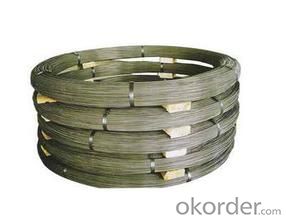
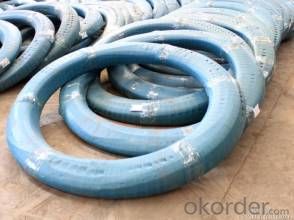
Any question, pls feel free to contact us !
- Q: What are the main factors affecting the thermal conductivity of steel wire rod?
- The main factors affecting the thermal conductivity of steel wire rod are the composition of the steel, the presence of impurities, the crystal structure, and the temperature of the rod.
- Q: How are steel wire rods used in the production of wire mesh?
- Wire mesh production relies heavily on steel wire rods, which play an indispensable role. These rods undergo a process that involves heating them and passing them through dies to achieve the desired wire diameter. Typically, low-carbon steel is used to provide the necessary strength and durability for wire mesh applications. Once the shaping and desired diameter have been achieved, the steel wire rods are introduced into a wire mesh machine. This machine interweaves the individual wires, forming a grid-like pattern. The wire rods are positioned both vertically and horizontally and are mechanically connected at their intersections. The resulting wire mesh finds applications across various industries. It serves as a robust and dependable barrier for fencing and security purposes. Additionally, it is used in construction to reinforce concrete structures, enhancing their strength and stability. Wire mesh also finds utility in industries such as agriculture, mining, and filtration. To ensure the durability and reliability of the final product, the quality of the steel wire rods used in wire mesh production is of utmost importance. It is crucial to select high-quality rods with the appropriate tensile strength and corrosion resistance properties that meet the specific requirements of each application. In conclusion, the production of wire mesh relies on the shaping of steel wire rods to the desired diameter and their subsequent interweaving to create a grid-like pattern. The resulting wire mesh finds diverse applications in industries such as fencing, construction reinforcement, and filtration.
- Q: How is steel wire rod used in the manufacturing of wire mesh sieves?
- Steel wire rod is used in the manufacturing of wire mesh sieves as it is the primary material from which the wires of the sieve are made. The steel wire rod is first drawn through a series of dies to reduce its diameter and increase its length, creating thin wires. These wires are then woven together to form the mesh pattern of the sieve, providing strength, durability, and the ability to withstand high temperatures and pressure.
- Q: How is steel wire rod used in the manufacturing of wire for garage door springs?
- Steel wire rod is used in the manufacturing of wire for garage door springs by being heated, drawn, and coiled to form the desired wire diameter and tensile strength required for the springs.
- Q: How are steel wire rods used in the manufacturing of tire belts for vehicles?
- Tire belts for vehicles heavily rely on steel wire rods, which are indispensable components. These rods, typically crafted from high-quality steel, serve a crucial role in fortifying the strength and endurance of the tire belts. Firstly, the steel wire rods play a significant part in constructing the framework of the tire belts. They are molded into specific patterns, such as crisscross or spiral, and embedded within the rubber material during manufacturing. This reinforcement grants the tire belts the power and stability to endure the immense pressure and strain experienced during vehicle operation. Furthermore, the steel wire rods enhance the overall performance and safety of the tire belts. They preserve the shape and integrity of the belts, preventing them from distorting or collapsing under heavy loads. This aspect is especially critical for ensuring proper traction, stability, and control of the vehicle, particularly during cornering, braking, and acceleration. Additionally, the steel wire rods contribute to the tire belts' ability to resist punctures and impact damage. The robust and flexible nature of steel enables the rods to absorb and distribute external forces, minimizing the risk of tire failure due to road hazards or sudden impacts. This feature is crucial for enhancing the longevity and reliability of the tires, ultimately leading to a safer driving experience. In conclusion, steel wire rods are an essential component in the tire belt manufacturing process for vehicles. They provide reinforcement, strength, and durability to the belts, resulting in improved performance, safety, and resistance to various road conditions and external forces.
- Q: What are the common production processes for argon-coated steel wire rod?
- The common production processes for argon-coated steel wire rod include wire drawing, annealing, coating, and coiling.
- Q: How is steel wire rod used in the production of wire mesh reinforcement?
- Steel wire rod is an essential component in the production of wire mesh reinforcement. It serves as the main raw material for manufacturing wire mesh, which is widely used in construction and other industries for reinforcing concrete structures. To produce wire mesh reinforcement, steel wire rod is first processed through a series of manufacturing steps. The rod is typically drawn through a series of dies to reduce its diameter and increase its length. This process, known as wire drawing, results in a thinner and longer wire with improved mechanical properties. The drawn wire is then fed into a specialized machine called a wire mesh welding machine. This machine uses electric resistance welding to join the wires together, forming a grid-like pattern. The welding process ensures that the wires are securely bonded at their intersections, creating a sturdy and durable wire mesh. The wire mesh reinforcement is used in various construction applications, such as in the construction of concrete slabs, walls, and columns. It is embedded in concrete structures to provide additional strength, prevent cracking, and increase the overall load-bearing capacity. The wire mesh acts as a reinforcement, distributing the forces and stresses evenly across the concrete, thereby enhancing its structural integrity. Furthermore, wire mesh reinforcement is also utilized in other industries, including agriculture, mining, and manufacturing. In agriculture, it is commonly used as fencing to secure livestock and crops. In mining, wire mesh is employed for safety purposes, such as preventing rockfalls and supporting tunnel walls. In manufacturing, wire mesh is utilized for filtration, separation, and containment purposes, among others. In summary, steel wire rod plays a crucial role in the production of wire mesh reinforcement. Its transformation through wire drawing and subsequent welding forms the basis for creating durable and versatile wire mesh. This reinforcement is widely used in construction and other industries to enhance the strength and integrity of various structures.
- Q: How does the tensile strength of steel wire rod vary with different wire drawing processes?
- The tensile strength of steel wire rod typically increases with different wire drawing processes. Wire drawing involves pulling the rod through a die, which reduces its diameter and increases its length. This process aligns the crystal structure of the steel, making it stronger and more resistant to breaking or bending. Therefore, as the wire rod undergoes more wire drawing processes, its tensile strength generally increases.
- Q: What are the different types of steel wire rod surface defects and their repair methods?
- There are several types of steel wire rod surface defects, including scale, pitting, scratches, and cracks. Scale refers to the formation of oxide layers on the surface due to exposure to high temperatures during production. Pitting occurs as small depressions or holes on the surface, often caused by corrosion or impurities in the steel. Scratches are visible marks or grooves on the surface, commonly caused by handling or abrasive contact. Cracks are linear fractures that can occur due to various factors such as stress or improper cooling. To repair these defects, different methods are employed. Scale can be removed through processes like pickling or shot blasting to restore the smoothness of the surface. Pitting can be repaired by grinding or polishing the affected areas to reduce the depth of the pits. Scratches can be minimized through abrasive techniques, such as sanding or buffing, to level the surface. Cracks are more complex to repair and may require welding or heat treatment to restore the integrity of the wire rod. Overall, the repair methods for steel wire rod surface defects depend on the specific type and severity of the defect, with the ultimate goal of achieving a smooth, defect-free surface.
- Q: What are the common industry developments for steel wire rod?
- Some common industry developments for steel wire rod include advancements in production processes to improve efficiency and quality, increasing use of automation and technology for manufacturing, development of high-strength and specialty wire rods for specific applications, growing demand for wire rods in construction, automotive, and infrastructure sectors, and efforts towards sustainability and eco-friendly production methods.
Send your message to us
Prestressed Hot Rolled Steel Wires
- Loading Port:
- China Main Port
- Payment Terms:
- TT or LC
- Min Order Qty:
- -
- Supply Capability:
- -
OKorder Service Pledge
OKorder Financial Service
Similar products
Hot products
Hot Searches
Related keywords
